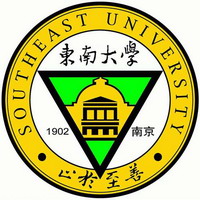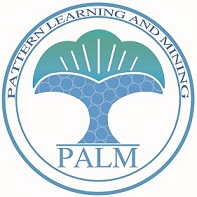
Shimin DI 邸世民


Pattern Learning and Mining (PALM) Lab,
Nanjing, Jiangsu
- shimin.di AT seu DOT edu DOT cn
- CSE Building 544
- SEU Homepage Google Scholar DBLP
News
- Nov 2025: Congrats to Xujie for his KDD'26
- Nov 2025: Congrats to all for 5 AAAI'26 papers
- Oct 2025: Congrats to Jialiang for his WSDM'26
- Aug 2025: Congrats to Yubo for his CIKM'25
- Jul 2025: Congrats to Liang for his 2 MM'25 papers
- Jun 2025: Invited to give a talk at JSCC 2025
- Jun 2025: Invited to give a talk to CAS
- May 2025: Congrats to Hanghui for his ACL'25
- May 2025: Our paper has been accepted to KDD'25
- May 2025: Congrats to Hanmo for his ICML'25
- Feb 2025: Congrats to Hanmo! Our Knowledge Benchmark Graph has been accepted to ICLR'25
- Jan 2025: Congrats to Hanghui for his ESWA'25
- Jan 2025: Invited to give a talk to USTC
Biography
Shimin DI is a Professor in the School of Computer Science and Engineering at Southeast University, Nanjing, Jiangsu, China. He was a Research Assistant Professor in the Department of Computer Science and Engineering at the Hong Kong University of Science and Technology. He was a postdoctoral researcher at HKUST working with Prof. Xiaofang ZHOU. Prior to that, he obtained his bachelor's degree in Mathematics from Hunan University, and subsequently completed his master's (2017) and doctoral degrees in Computer Science and Engineering from HKUST (2022), under the supervision of Prof. Lei CHEN. He did an internship at 4Paradigm Inc., and was mentored by Dr. Quanming YAO.
Research
Our ongoing and future research primarily focuses on "Next-Generation Automated Artificial Intelligence", aiming to elevate the level of automation in AI systems. We are particularly interested in exploring AI model design driven by Large Language Models to enhance interactivity, reduce the complexity and cost of deploying AI across various scientific fields, and facilitate its practical application. Our research aims to enable professionals (especially researchers in other non-CS areas) and non-professionals to swiftly integrate AI models into diverse, real-world production and R&D settings, accelerating innovation and deployment.
- Artificial Intelligence for Science
- Autonomous Artificial Intelligence
- Large Language Model
- Graph Representation Learning
We are further exploring some interesting topics. Please feel free to contact me if you are interested in any of my research topics and papers.
Opening Positions:
-
Postdoctoral Fellow: I am currently recruiting a postdoctoral fellow to work with me. I will assist the candidate in applying for Southeast University’s ZhiShan postdoctoral program and Jiangsu Province’s postdoctoral program. Ideal candidates should have a strong publication record and project experience.
-
2 PhD Students Per Year (1 position available for Fall 2026, updated on Aug 10, 2025): I am currently seeking self-motivated PhD students to join my group. Ideal candidates should meet one of the following criteria: (1) Undergraduate students from top-tier universities with an excellent GPA or recipients of national scholarships, or (2) Master’s students with research experience, preferably with accepted publications.
-
5 Master Students Per Year (5 positions available for Fall 2026, updated on Jun 6, 2025): Ideal candidates are expected to have a strong GPA record or solid coding skills. Preference will be given to those with research experience.
-
Undergraduate Students (very limited positions): For undergraduate students with a strong interest in research, I can provide research topics and become mentor for undergraduate thesis projects, along with monthly allowance and research resource. These students will be given priority consideration for admission into master’s or PhD programs.
-
1 Research Associate (1 position available): Candidate needs some professional knowledge and good learning ability to assist in conducting research projects and daily management of research groups.
I will personally supervise all PhD students, master’s students, undergraduate students, and research associates. Please email me if you are interested in joining our research group.
Teaching Courses
- COMP 4211: Machine Learning (Spring 2024), HKUST
Academic Service
- Program Committee Member: SIGKDD 2022-2025, WWW 2025, AAAI 2021-2025, VLDB 2026/2025, ICDE 2023, IJCAI 2020, SDM 2024/2022, WSDM 2022
- Conference Reviewer: ICLR 2025, WWW 2024, ICML 2023-2025, NeurIPS 2022-2025, CVPR 2023
- Journal Reviewer: TKDE, TOIS, TKDD